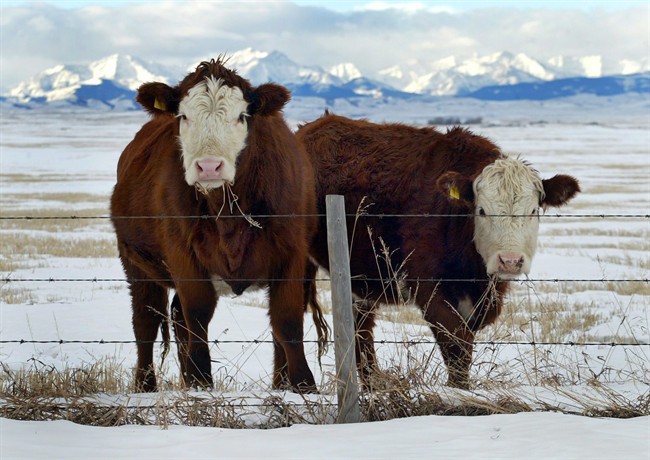EDMONTON – Canada’s food safety watchdog says a small amount of leftover contaminated feed was the most plausible cause of mad cow disease discovered last February on a farm near Edmonton.

The Canadian Food Inspection Agency released a report Monday that says no part of the Black Angus beef cow entered the human food or animal feed systems.
The report says no significant events could be linked to the discovery of bovine spongiform encephalopathy (BSE) near Edmonton and no other sick animals were found.
The February case — the 19th in Canada — prompted a few countries to place temporary restrictions on Canadian beef imports.
An investigation report says the cow was born at a nearby farm almost two years after Canada brought in more strict controls on animal feed to prevent BSE. A previous case was diagnosed on the same birth farm in an animal born in 2004.
“No significant events could be linked with this case but the potential for the carry-over of a small amount of residual contaminated feed could not be discounted,” says the report.
The chances of finding other cattle infected with BSE that were born within one year of the February case “remain extremely low,” it says.
It is “highly improbable” that the BSE was caused by contamination at either a slaughterhouse or a rendering facility.
Harpreet Kochhar, the CFIA’s chief veterinary officer, said consumers and Canada’s trade partners should be reassured.
- Gas prices surge in some parts of Canada. What’s causing pain at the pumps?
- ‘She gets to be 10’: Ontario child’s heart donated to girl the same age
- Bird flu risk to humans an ‘enormous concern,’ WHO says. Here’s what to know
- Ontario premier calls cost of gas ‘absolutely disgusting,’ raises price-gouging concerns
“We are very much committed to protecting human and animal health and we are very much confident that our system for detection and managing BSE works very well,” he said from Ottawa.
“The beef is safe, the beef products are safe and we are doing our utmost to make sure there is absolutely very little risk of BSE prions circulating.”
Kochhar said South Korea, Taiwan, Egypt and Indonesia still have some restrictions on Canadian beef.
An outbreak of BSE in 2003 cost Canada’s cattle industry billions of dollars in lost exports around the world.
Dave Solverson, president of the Canadian Cattlemen’s Association, said producers will be heartened by the report.
“There is no smoking gun,” said Solverson, who ranches near Camrose, Alta.
The report shows that Canada has a robust and comprehensive surveillance system and controls for BSE, he said.
BSE is a fatal and untreatable wasting disease of the brain and nervous systems. It is caused by rogue proteins called prions, which can be spread through contaminated feed.
Humans who eat infected beef can develop a fatal disease called variant Creutzfeldt-Jakob disease. Fewer than 250 human cases have been reported worldwide.
The CFIA report says its investigation found 746 cattle that were born within one year at the same farm as the BSE cow or had access to the same feed.
Any of those animals found alive were placed under quarantine. Some have been destroyed or will be destroyed under the agency’s BSE rules. Others have died.
More than 300 animals were traced to a slaughter plant or feedlots and 118 were exported for slaughter.
The CFIA said it is still tracing the remaining animals.

Comments